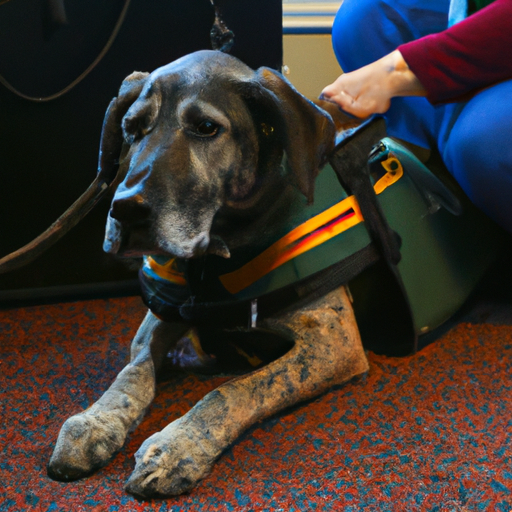As a caregiver, it’s important to understand the roles and responsibilities of a PTSD service dog. These remarkable animals can make a significant difference in the life of someone living with Post Traumatic Stress Disorder (PTSD).
H2: Understanding PTSD
Post Traumatic Stress Disorder, or PTSD, is a mental health condition triggered by experiencing a terrifying event. Symptoms can include flashbacks, nightmares, severe anxiety, and uncontrollable thoughts about the event. Each individual’s experience with PTSD is unique, often requiring personalized care and support.
H2: The Role of PTSD Service Dogs
PTSD service dogs are specifically trained to assist individuals with PTSD. They provide a sense of security, mitigate distressing symptoms, and even perform tasks that the individual may have difficulty accomplishing on their own. Here are some ways they help:
- Detecting Anxiety: PTSD service dogs are trained to recognize signs of anxiety. They can alert their handler to an impending anxiety attack before it occurs.
- Interrupting Nightmares: These dogs can wake their handler from a nightmare, providing immediate comfort.
- Creating Personal Space: In crowded situations, PTSD service dogs can create a buffer between their handler and others, reducing feelings of overwhelm.
- Assisting in Medical Emergencies: In cases of medical distress, they can fetch medication or even press an emergency alert system.
H2: The Training of PTSD Service Dogs
Training a PTSD service dog is a rigorous process, requiring extensive time and effort. They undergo several stages of training:
- Basic Training: This includes house training, leash training, and basic commands like sit, stay, and come.
- Public Access Training: Dogs are trained to behave appropriately in public places.
- Task-Specific Training: Here, dogs are trained on specific tasks related to PTSD symptoms.
H2: Benefits of PTSD Service Dogs
Benefits of PTSD service dogs extend beyond their tasks. They can contribute to overall well-being and recovery. Here are some benefits:
| Benefits of PTSD Service Dogs | |
|---|---|
| 1. | Provide companionship and unconditional love |
| 2. | Reduce feelings of isolation |
| 3. | Encourage exercise and outdoor activities |
| 4. | Improve sleep quality |
H2: Choosing a PTSD Service Dog
Choosing the right PTSD service dog is crucial. Considerations include the individual’s lifestyle, the dog’s breed and temperament, and the specific needs that the dog can address. It’s always advised to seek professional guidance when selecting a PTSD service dog.
Frequently Asked Questions
Q: How long does it take to train a PTSD service dog?
A: It varies, but it typically takes between 1 to 2 years.
Q: Can any dog become a PTSD service dog?
A: Not all dogs have the temperament or ability to become a service dog. It requires specific breeds and extensive training.
Q: Are PTSD service dogs covered by insurance?
A: Some insurance providers may cover the cost of a service dog, but it varies by provider and plan.
Q: Can PTSD service dogs go anywhere?
A: In most cases, yes. They are generally allowed anywhere their handler goes.
Remember, the journey to managing PTSD is a marathon, not a sprint. And with the right support, including the help of PTSD service dogs, individuals can regain control of their lives.



